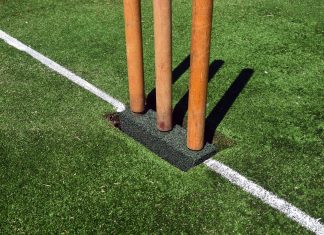LATROBE Valley nurses are subjected to death threats and assaults on the job and want to see security personnel permanently manned at Latrobe Regional Hospital to protect them.
Australian Nurses Federation (Victorian branch) secretary Lisa Fitzpatrick told The Express yesterday local nurses had reported being injured in struggles with patients which sometimes required treatment in LRH’s own emergency department and “there is overwhelming concern about how often nurses are spat at” while carrying out their duties.
“We are very concerned that there is a culture where this has become an accepted part of their job so we have asked nurses to report these incidents to us and we will keep them confidential,” Ms Fitzpatrick said.
“They are very much saying to us that there are not enough safety measures or security personnel on site to protect them and they are struggling in relation to getting assistance from police as they don’t always have the resources available when incidents are occurring.
“It’s really important that (security) be there on site and be appropriately trained to de-escalate situations… this is what will make (nurses) safe, where now they are not,” she said.
LRH director corporate services Catherine Greaves said, in a statement, safety issues did “arise at times” particularly for those working in the areas of mental health or in the ED “where the treatment of drug and alcohol affected patients often takes place”.
Ms Greaves welcomed the recent announcement of $25,000 from the State Government to install extra closed circuit television cameras in the ED and mental health unit and to expand the intercom system and duress alarms used by staff.
LRH is one of 40 Victorian hospitals to share in $1 million for the safety and security upgrade measures, which State Health Minister David Davis said were evidence of the government “steadily and comprehensively responding to increase hospital security across the state”.
Ms Fitzpatrick said the sums allocated to date went nowhere near delivering on a $21 million security package earlier promised by the State Government.
She said nurses were frustrated at a bureaucratic process which had seen the government conduct an inquiry into matters of occupational violence prevention in Victorian health services, but fail to act on most of the 39 recommendations, “particularly if they required money”.
“There has been no real action… and now they have started another committee (for the same purpose)… they just want to be seen to be doing something,” Ms Fitzpatrick said, adding that in the meantime the rate of violent incidences was growing.
In response to funding announcements for CCTV cameras Fitzpatrick said “if it is working, and being watched, then it could be useful for prosecution later but if no-one is looking at it, it gives little comfort”.
Duress alarms also required security personnel to be able to respond in “a timely manner” or “by the time someone gets to the incident it’s too late,” she added.
Ms Greaves said LRH was “working with the Department of Health and other health services to identify and implement strategies to maximise safety for all staff including nursing staff and patients”.










